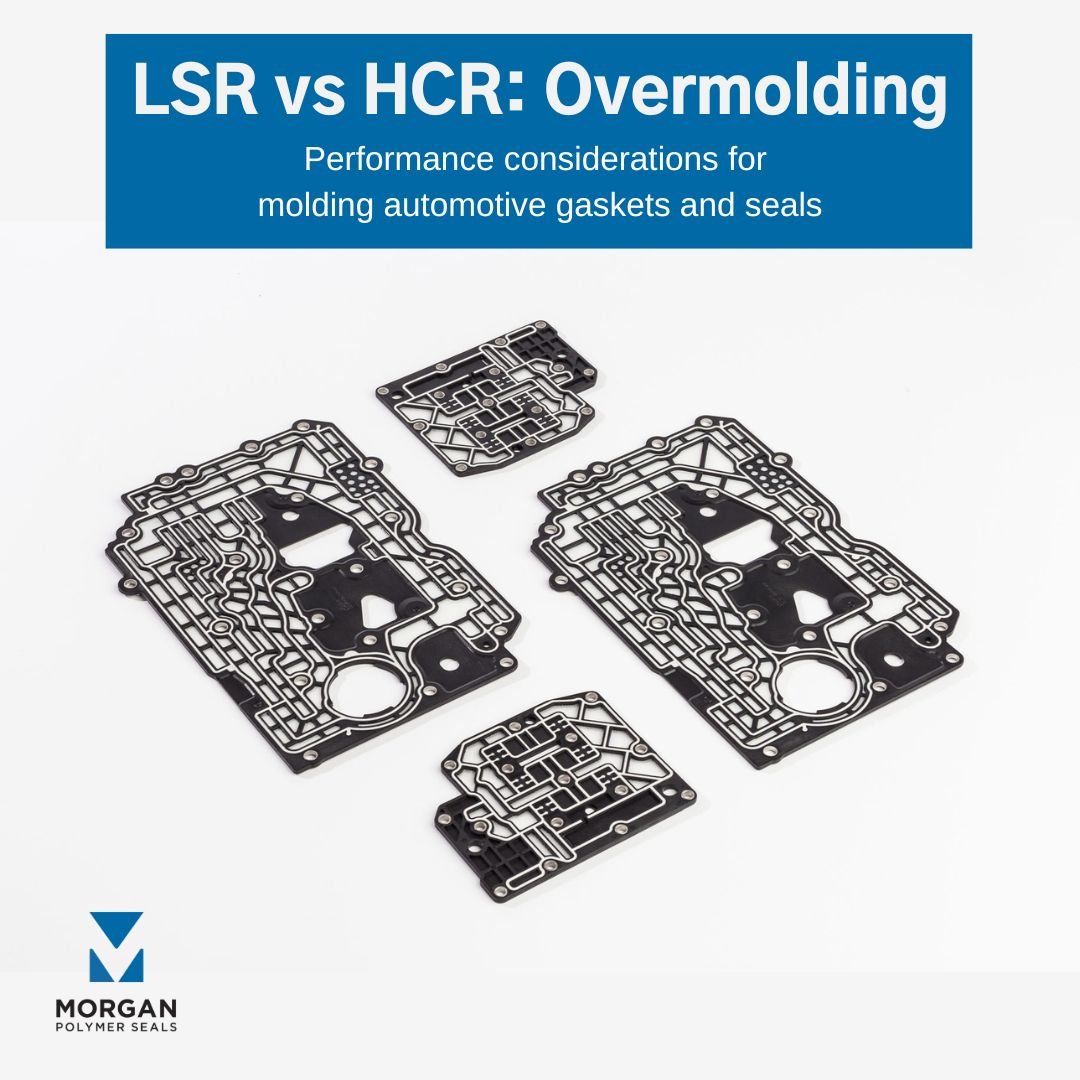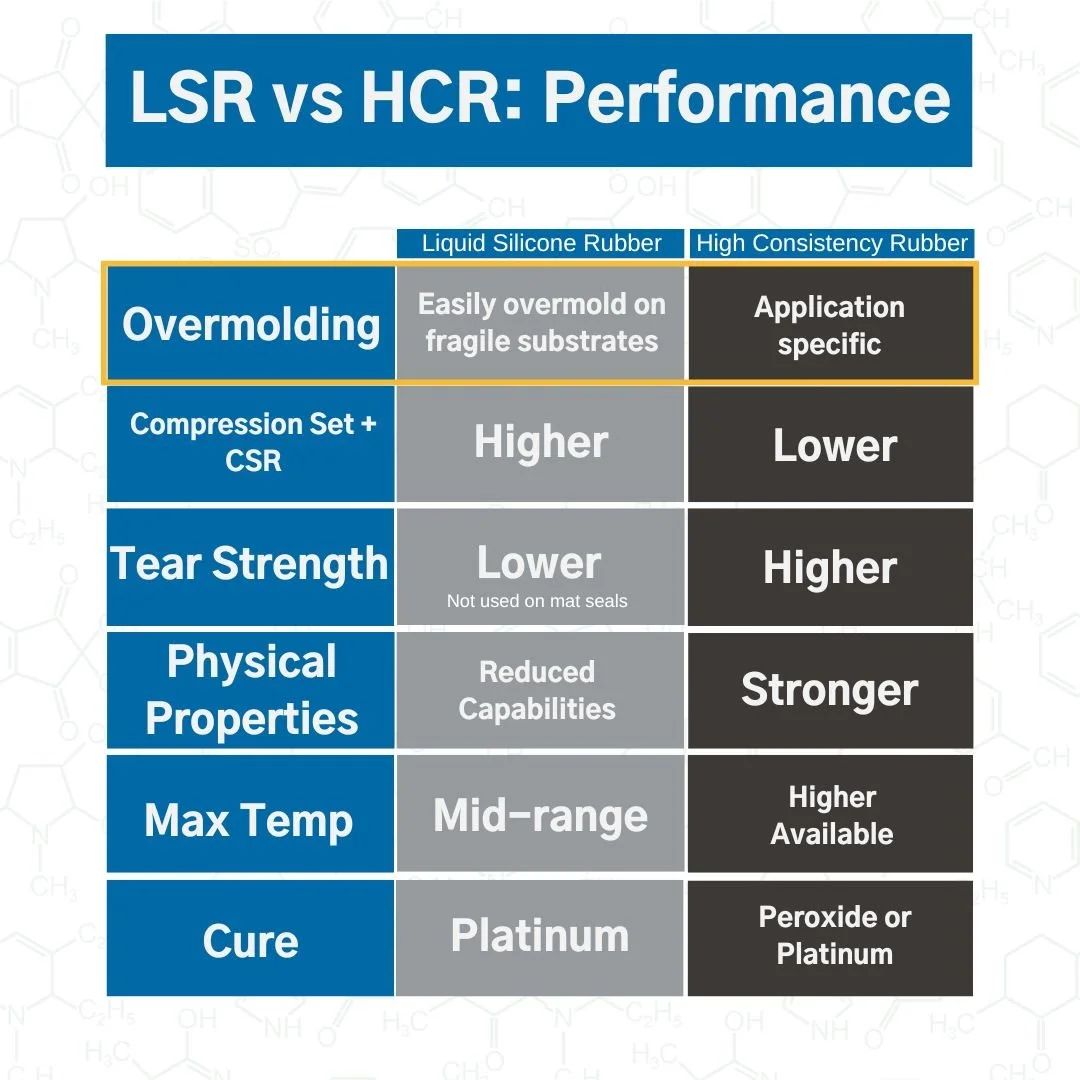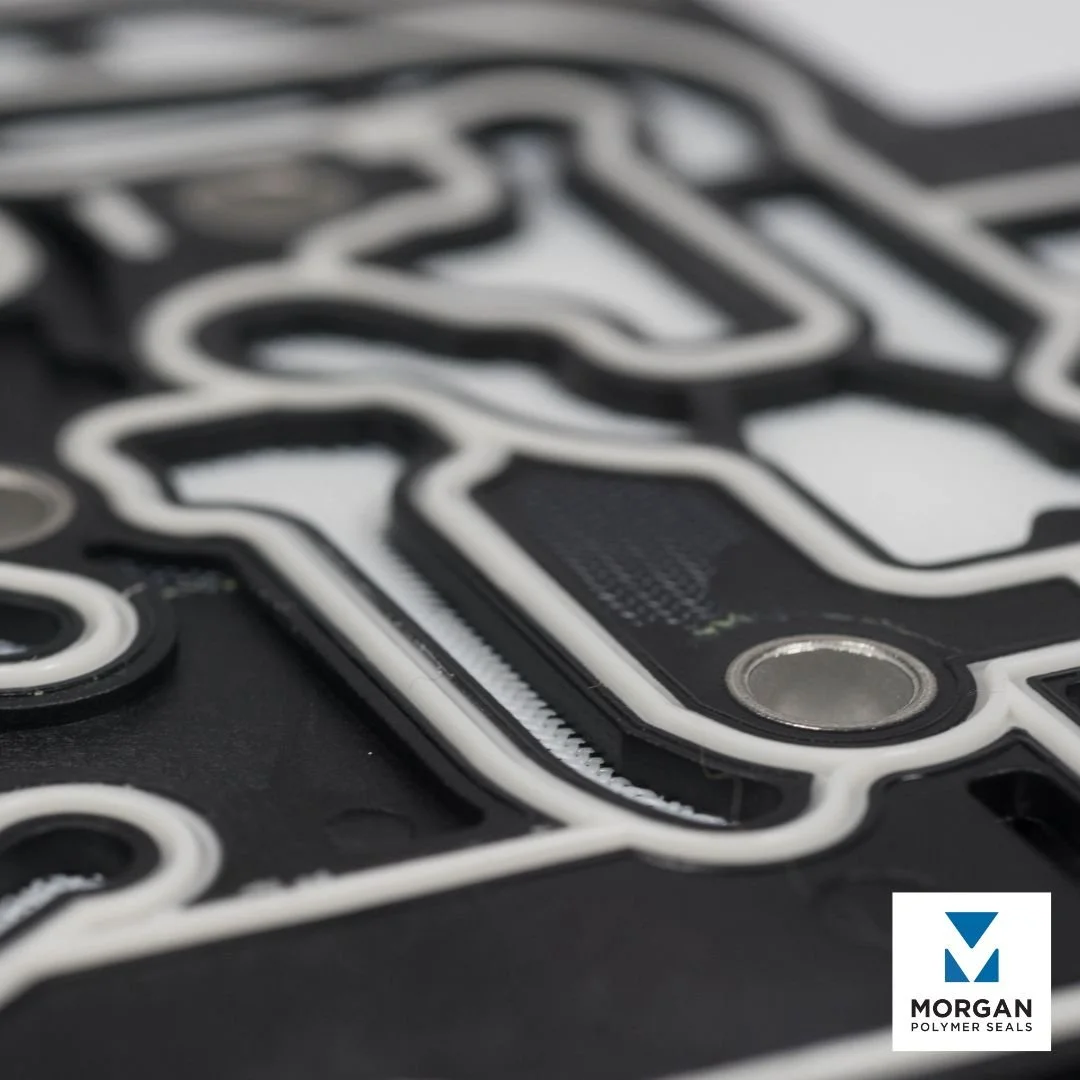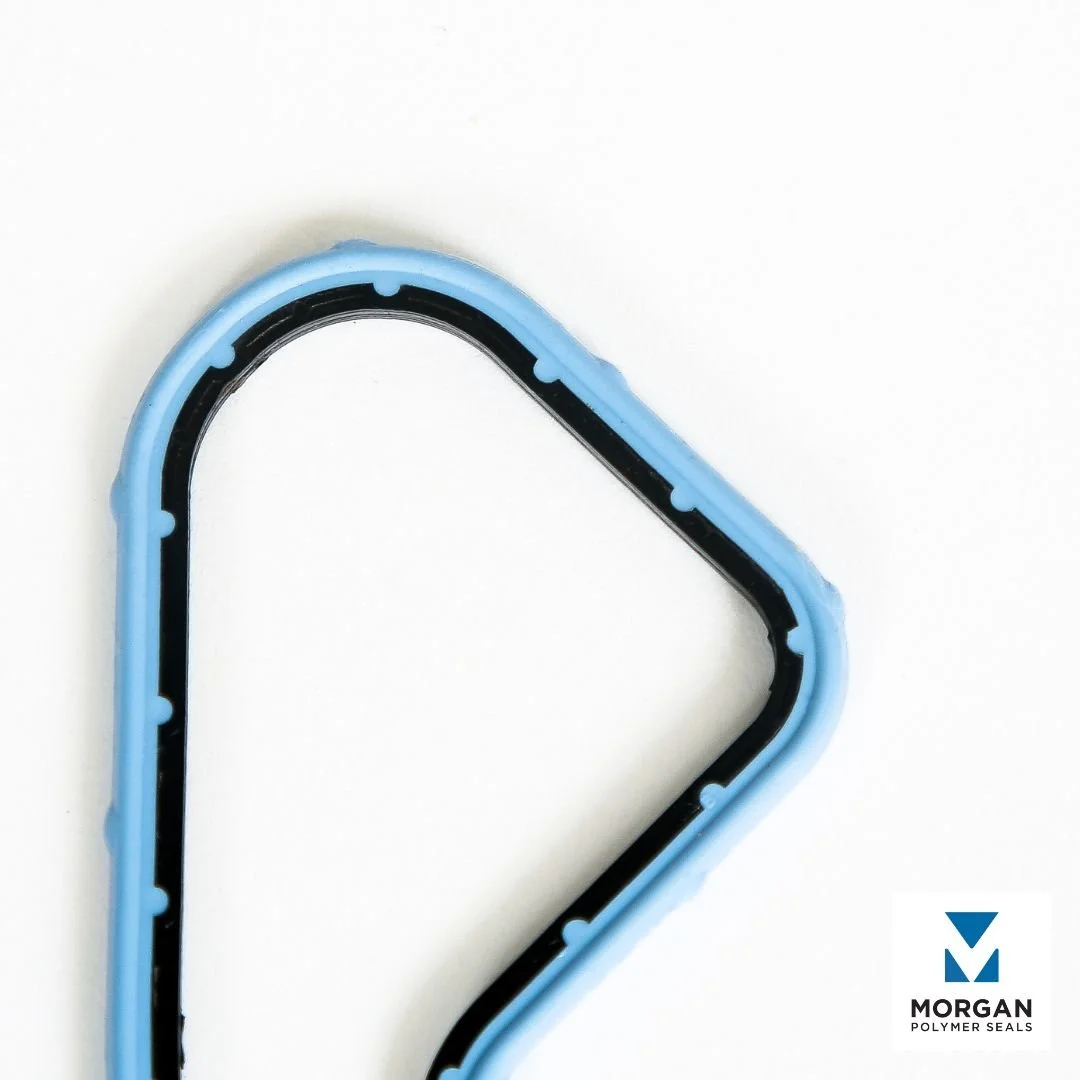LSR vs. HCR: Overmolding Performance
Automotive Filter Plates overmolded with LSR on a plastic carrier
For manufacturing overmolded automotive gaskets and seals, Liquid Silicone Rubber (LSR) is generally preferred over High Consistency Rubber (HCR). The preference for LSR is based on several key factors:
Chart: LSR is typically the preferred material for overmolding autmotive gaskets
Precision and Complexity:
LSR is highly suitable for intricate and detailed designs. Its low viscosity allows it to flow into complex mold shapes, resulting in precise and consistent parts. This makes it ideal for overmolding applications where tight tolerances and complex geometries are required.
HCR has a higher viscosity, making it less ideal for complex and detailed molds. It is better suited for simpler shapes and larger parts.
Detail image of Filter Plate with LSR (gray) overmolded onto plastic carrier (black)
Processing and Cycle Time:
LSR is processed using injection molding, which offers fast cycle times and high efficiency. This is particularly beneficial in high-volume manufacturing environments typical in the automotive industry.
HCR is typically processed using compression or transfer molding, which involves longer cycle times and is less efficient for high-volume production.
Material Properties:
LSR has excellent thermal stability, chemical resistance, and flexibility. These properties are crucial for automotive gaskets that need to withstand harsh environments and temperature variations.
While HCR also has good thermal and chemical resistance, its mechanical properties and performance may not match the specific requirements of intricate overmolded gaskets as well as LSR.
Automation and Production Efficiency:
The injection molding process for LSR is highly automated, reducing labor costs and improving repeatability and quality control.
The processing of HCR often requires more manual handling and labor, which can lead to higher production costs and variability in the final product quality.
Video: automation for overmolding gaskets with LSR in Mexico
Bonding and Adhesion:
LSR generally offers better adhesion to various substrates when used in overmolding applications, ensuring a strong bond between the gasket and the part it is molded onto.
While HCR can also be used in overmolding, achieving a strong bond may be more challenging and less consistent compared to LSR.
Light Blue HCR (Silicone) overmolded on black plastic carrier for waterpump gasket. LSR is not the *only* option for overmolding.
In summary, LSR is preferred for overmolding automotive gaskets due to its ability to produce precise, high-quality parts with excellent material properties, faster processing times, and better suitability for automated production. These advantages make it the material of choice for meeting the demanding requirements of the automotive industry.
For more about LSR vs HCR, check out this article about the material characteristics that make each material distinctive.
Do you have a program you’d like us to help with? Click the contact button below and we’ll reply right away.




